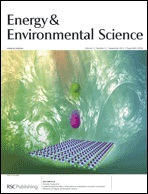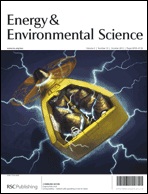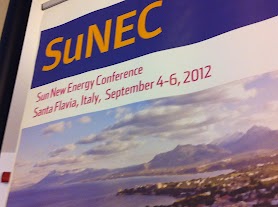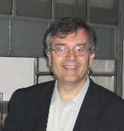The latest issue of Energy & Environmental Science is now online. You can read issue 9 here and issue 10 here.
Issue 9
 The outside front cover features an article on Novel nanostructures for next generation dye-sensitized solar cells by Nicolas Tétreault and Michael Grätzel
The outside front cover features an article on Novel nanostructures for next generation dye-sensitized solar cells by Nicolas Tétreault and Michael Grätzel
 Understanding the effect of ferroelectric polarization on power conversion efficiency of organic photovoltaic devices is the article highlighted on the inside front cover by Yongbo Yuan, Pankaj Sharma, Zhengguo Xiao, Shashi Poddar, Alexei Gruverman, Stephen Ducharme and Jinsong Huang
Understanding the effect of ferroelectric polarization on power conversion efficiency of organic photovoltaic devices is the article highlighted on the inside front cover by Yongbo Yuan, Pankaj Sharma, Zhengguo Xiao, Shashi Poddar, Alexei Gruverman, Stephen Ducharme and Jinsong Huang
Issue 9 contains the following Analysis Articles and Perspectives:
Analysis Articles
Fuel production from CO 2 using solar-thermal energy: system level analysis
Jiyong Kim, Terry A. Johnson, James E. Miller, Ellen B. Stechel and Christos T. Maravelias, Energy Environ. Sci., 2012, 5, 8417
Perspective
Novel nanostructures for next generation dye-sensitized solar cells
Nicolas Tétreault and Michael Grätzel, Energy Environ. Sci., 2012, 5, 8506
High electrode activity of nanostructured, columnar ceria films for solid oxide fuel cells
WooChul Jung, Julien O. Dereux, William C. Chueh, Yong Hao and Sossina M. Haile, Energy Environ. Sci., 2012, 5, 8682
Issue 10
 The outside front cover features an article on Living battery – biofuel cells operating in vivo in clams by Alon Szczupak, Jan Halámek, Lenka Halámková, Vera Bocharova, Lital Alfonta and Evgeny Katz
The outside front cover features an article on Living battery – biofuel cells operating in vivo in clams by Alon Szczupak, Jan Halámek, Lenka Halámková, Vera Bocharova, Lital Alfonta and Evgeny Katz
 Sorption enhanced steam reforming of ethanol on multifunctional catalysts derived from hydrotalcite is the article highlighted on the inside front cover by Gaowei Wu, Chengxi Zhang, Shuirong Li, Zhiqi Huang, Suli Yan, Shengping Wang, Xinbin Ma and Jinlong Gong
Sorption enhanced steam reforming of ethanol on multifunctional catalysts derived from hydrotalcite is the article highlighted on the inside front cover by Gaowei Wu, Chengxi Zhang, Shuirong Li, Zhiqi Huang, Suli Yan, Shengping Wang, Xinbin Ma and Jinlong Gong
Issue 10 contains the following Opinion and Perspective articles:
Opinion
Fuel cell electric vehicles and hydrogen infrastructure: status 2012
Ulrich Eberle, Bernd Müller and Rittmar von Helmolt, Energy Environ. Sci., 2012, 5, 8780
Perspective
Graphene quantum dots: an emerging material for energy-related applications and beyond
Zhipan Zhang, Jing Zhang, Nan Chen and Liangti Qu, Energy Environ. Sci., 2012, 5, 8869
Copper molybdenum sulfide: a new efficient electrocatalyst for hydrogen production from water
Phong D. Tran, Mai Nguyen, Stevin S. Pramana, Anirban Bhattacharjee, Sing Yang Chiam, Jennifer Fize, Martin J. Field, Vincent Artero, Lydia H. Wong, Joachim Loo and James Barber, Energy Environ. Sci., 2012, 5, 8912















![c2ee22042c[1]-3_F1h_630 The SWCNT/PANI hybrid film](https://blogs.rsc.org/ee/files/2012/08/c2ee22042c1-3_F1h_630-300x225.jpg)
 Chinese scientists have discovered a new method of preparing quasi-spherical VO2 nanoparticles with uniform size and high crystallinity by doping them with antimony.
Chinese scientists have discovered a new method of preparing quasi-spherical VO2 nanoparticles with uniform size and high crystallinity by doping them with antimony.